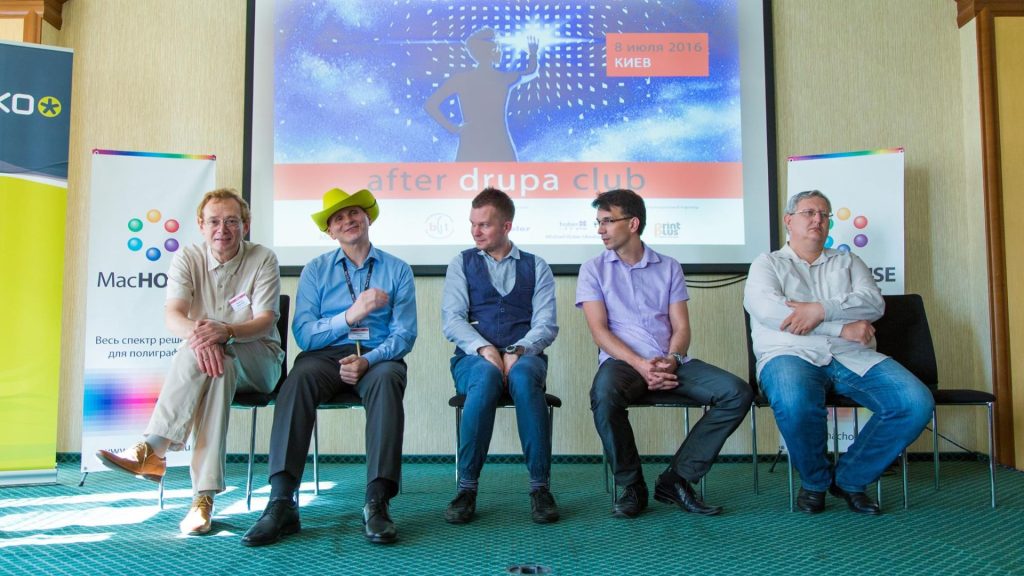With the help of Ukrainian publisher Igor Agarkov, we try to give a size to the printing and packaging market in Ukraine
Igor, can you give us some figures about the Ukrainian print market size?
Determining the real volume of the Ukrainian print market is difficult for a number of reasons. Due to some features of the economy, the data of the State Statistics Committee cannot always be trusted. From the report of the State Statistics Committee called “The Volume of goods and services output” by business entities and by the type of economic activity in 2013–2019, it follows that in 2019 the country’s printing enterprises produced products (included in the category “Printing activities, replication of recorded information”) for more than 18.8 billion UAH (nearly 580 million €). The State Statistics Committee also provides separate indicators for printing-related categories (2019):
- Printing activities and the provisioning of related services: 2.4 billion UAH;
- Newspapers printing: 556 million UAH;
- Printing of other products: 16 billion UAH;
- Production of printing forms and provision of other printing services: 1.7 billion UAH;
- Binding and binding activities and the provision of related services: 135 million UAH.
To summarize, we get to around 40 billion UAH (nearly 1.2 billion €).

But I would estimate the annual turnover of the Ukrainian printing market as higher. For example, according to the Association of CEPI (European Paper Producers), before the war Ukraine annually imported 440,000 tons of paper and carton from Europe alone. If we take as an indicator the cost per ton of 1,000 EUR and take into account some profitability margin (30%), then we will get a very tangible market volume. And this is without considering the segments where plastics are predominantly used or the market of can printing, the advertising and souvenir segment associated with direct printing on objects, flexible packaging, etc.
The number of business entities, according to the State Statistics Committee, in the category “Production of publishing houses from wood, paper, printing activities” and separately for “Printing activities, replication of information” is 22.588 and 5.108 respectively. Among these, newspaper printing includes 224, other printing products, 3.300, bookbinding, 297 (as of 2019).
Before the war, Ukraine annually imported 440,000 tons of paper and carton from Europe alone.
Igor Agarkov
The number of people employed in the printing industry (as of 2020) was 102.977 people, of which 16.005 are private entrepreneurs.
We annually publish the “Printing of Ukraine” catalog, in which we place basic information about all the printing houses in our database together with the scope of their activities and equipment. The most recent eighteenth issue contains information about 900 Kyiv-based and 1.300 regional printing houses.
Can you give us a profile of the main printing players in Ukraine?
The peculiarity of the Ukrainian printing industry is the presence of three powerful operators of combined runs with very serious systems for automated quality control and processing of orders (Sborka, Wolf and Glyanets). Thousands of advertising agencies, small printing houses and individuals from all regions of Ukraine place their orders in such print houses. Today Wolf has introduced a special free-of-charge printing option on its website for the needs of the armed forces and volunteers.

The presence of efficient carriers (Nova Poshta) neutralized the importance of geographic locality for contractors. Therefore, it was completely unimportant where the contractor was located: the customer received their order the next day after placement.
In recent years, there have been fewer and fewer specialized companies, as there are some types of products that are more profitable to print (packaging, labels, books). Accordingly, many companies diversify their activities and expand the range of services with these types of products.
Unfortunately, many flexo printing facilities are located in Kharkiv, which was seriously damaged by the aggressor's shelling.
Igor Agarkov
Moreover, most print houses actually strive to become advertising and production companies and provide services not only for printing, but, for example, for the production of POS materials, or they enter the advertising and souvenir products market.
There are about ten backbone enterprises for carton packaging in Ukraine (the main ones are Lunapack and Vesna in Dnipro, Ukrpol in Stryi, Avist in Khmelnitsky, Planeta in Rivne, Pulp Mill Print in Kyiv, Univest Packaging from Fastov and several printing houses in Kharkiv). But in general, the production of carton packaging has been mastered by a lot of printing houses that have not been providing such services before.
The same applies to the book segment. Today, in addition to traditional book factories, several dozen offset printing houses produce these products at a high volume. And no less than a hundred digital printers offer book production services with print runs from 1 to 500 copies. I note that my company, in addition to its main activity, annually publishes about ten books on various topics.

As for label production, it is a bit simpler here. There are about 200 flexo printing houses. In addition, ten enterprises (from Lviv, Kharkiv, Odessa, Kyiv, Zaporizhzhya) are equipped with web-fed digital presses for label printing (three of these companies also have flexo machines). The label is also actively printed on sheet-fed printing machines (digital and offset). There are hundreds of such printers.
There are about 50 printing houses in the segment of flexible packaging printing (wide-roll flexo). Unfortunately, many flexo printing facilities are located in Kharkiv, which was seriously damaged by the aggressor’s shelling.
What makes the Ukrainian printers popular internationally? How much of the business is domestic? How much is export, and to which countries?
Ukrainian printing houses systematically produce products for the European Union. The exact volume of exports is unknown to me. According to the State Statistics Committee, it is rather low. It is better to operate with the data of the customs database, to which I currently do not have access. I will give specific examples.
For example, one of the leaders in book printing Unisoft (Kharkiv) had an annual turnover with the EU of about €2 million before the invasion. By the way, today its employees are actively engaged in volunteer activities, led by the owner. Significant volumes of exported books are produced even by small regional printing houses (for example, Kolo from Drohobych).
Manufacturers of premium packaging with twin-spot effects and micro-embossing (for example, Vesna from Dnipro) are actively working with many European markets.
We also have non-standard printing companies (Start-Polygraph), which among other things are producing small-run packaging for their partner, the international company Sticky Notes.